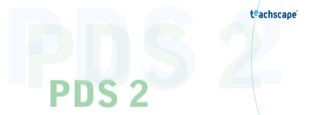PDS2

Thursday, February 14, 2008
MARK ATKINSON: Here’s my take on the tools needed for effective use of MRTs:
-
1.There needs to be a clearly conceived context for the use of these resources. Unleashing these assets onto instructional leaders, who have no formal understanding of how to produce learning outcomes with these resources, is, at best, a waste of time. The most important tool that the community can create to support the effective use of MRTs is to develop an outcomes-based service methodology that defines how an instructional leader can use these resources with teachers to produce measurable learning outcomes. This is the work that Teachscape has undertaken in recent years.
-
2.I’m sure many of the other tools I list will be on everyone’s list, including:
-
a.video-annotation tools -- allowing one to affix commentary to particular instructional “scenes;”
-
b.drag and drop authoring tools -- for customizing MRTs and creating derivative MRTs (Teachscape has developed a prototype of such tools in partnership with the University of Chicago, called PDS-2);
-
c.YouTube like tools to allow easy uploading of video;
-
d.Generic survey tools to create embedded assessments for learning within the MRT;
-
e.robust discussion tools that allow for asynchronous and synchronous conversation to support professional learning communities;
-
f.robust tagging tools and clear taxonomies for tagging the content assets within MRTs
-
g.equally robust search tools to search and retrieve the assets contained within a library of MRTs
-
h.a very sophisticated content management system to track and manage the content assets of a massive library of MRTs – IP issues are non-trivial;
-
i.sophisticated user interfaces that accommodate bandwidth and browser issues that still plague educators across America
-
j.intelligent back-end technologies that allow for the efficient maintenance of distinct teacher identities, dynamic professional learning communities, classroom walkthrough data, teacher portfolios etc..
Thank you again for the opportunity to share in the conversation.
Mark


